Best Types Of Pots From Spain That Tell A Beautiful Story
Time of issue: 2025-03-31 12:11:11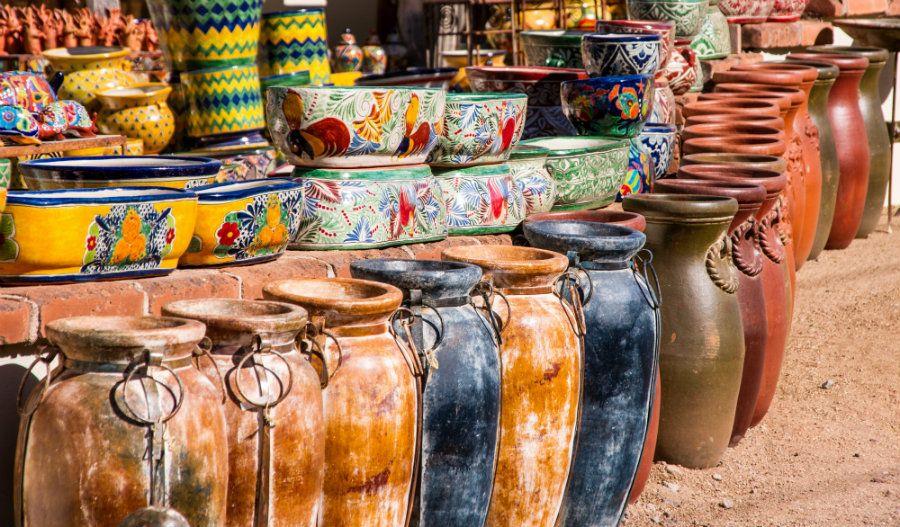
Types of pots from Spain include botijos (for cooling water), cántaros (for carrying water), orzas (for food storage), pucheros (for stews), cazuelas (for baking and serving), and tinas (for multipurpose use). They aren’t just simple clay pots. Each of them is crafted with care in century-old techniques.
Spanish were rich in pottery, but Romans and Moors gave it colors and designs. From the brightly painted Talavera pots to rustic cántaros and iconic botijos, each item reflects the region it comes from and the hands that made it. They’re pieces of living art, continuing centuries of tradition and culture. Even in today’s modern homes, Spanish pots are still appealing. Be it for cookware or home decor.
Spanish pottery offers the perfect mix of beauty, tradition, and purpose. These pots are loved not just for their look but for the story they carry. At Global Reach Ceramic, we connect you with authentic, artisan-made Spanish pottery that brings warmth, culture, and character to your home.
History of Spanish Pottery
Spanish pottery has a rich history that goes back thousands of years. It started with early settlers making simple clay pots by hand for everyday use like cooking, carrying water, and storing food. When the Romans came, they brought smoother shapes and elegant designs. Later, the Moors from North Africa introduced bright colors, detailed patterns, and glazing techniques that made the pottery stronger and more beautiful.
Over time, different regions in Spain created their own unique styles, each with its own colors and designs. These pots weren’t just useful but made with love and care. Owning a Spanish pot means holding a piece of history, art, and tradition in your hands.
Spanish Pottery Techniques and Materials
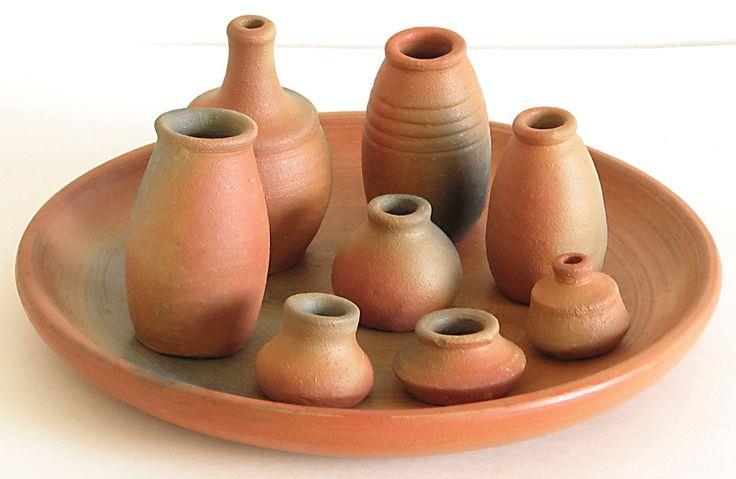
Spanish pottery is special because it’s still made the traditional way, by hand. Many skilled artists, called potters, shape the clay using their hands or a spinning wheel. This means that each pot is a little different and has its own unique look.
Most Spanish pottery uses natural clay, especially red clay found in southern Spain. This clay is strong and great for making pots you can cook with, like cazuelas and pucheros. Once the pot is shaped, it’s left to dry. Then, it’s baked in a hot oven called a kiln to make it hard. Some pots are painted with shiny colors like blue, green, and white. These painting styles came from the Moors long ago and are still used today.
So when you buy a Spanish pot, you’re getting something made with care, using old and beautiful techniques that have been around for centuries.
Types of Pots From Spain
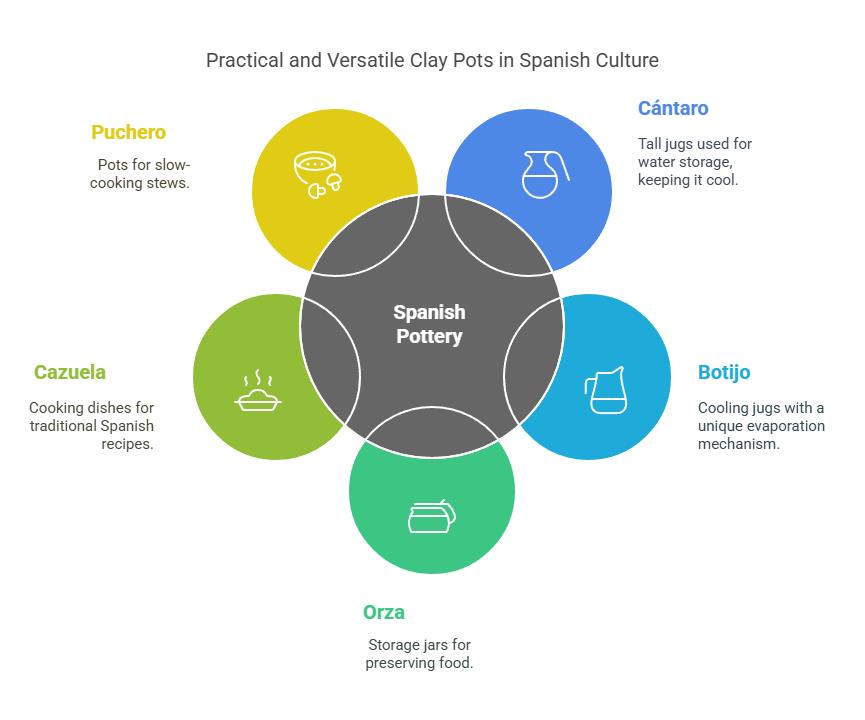
Spanish pottery isn’t just pretty; it’s deeply practical. For centuries, people across Spain have used these handmade clay pots for everyday life. Each one was designed with a clear purpose in mind, from storing fresh water to slow-cooking hearty meals. Here’s a closer look at some of the most iconic types of pots from Spain and how they were used.
Cántaro – The Water Keeper
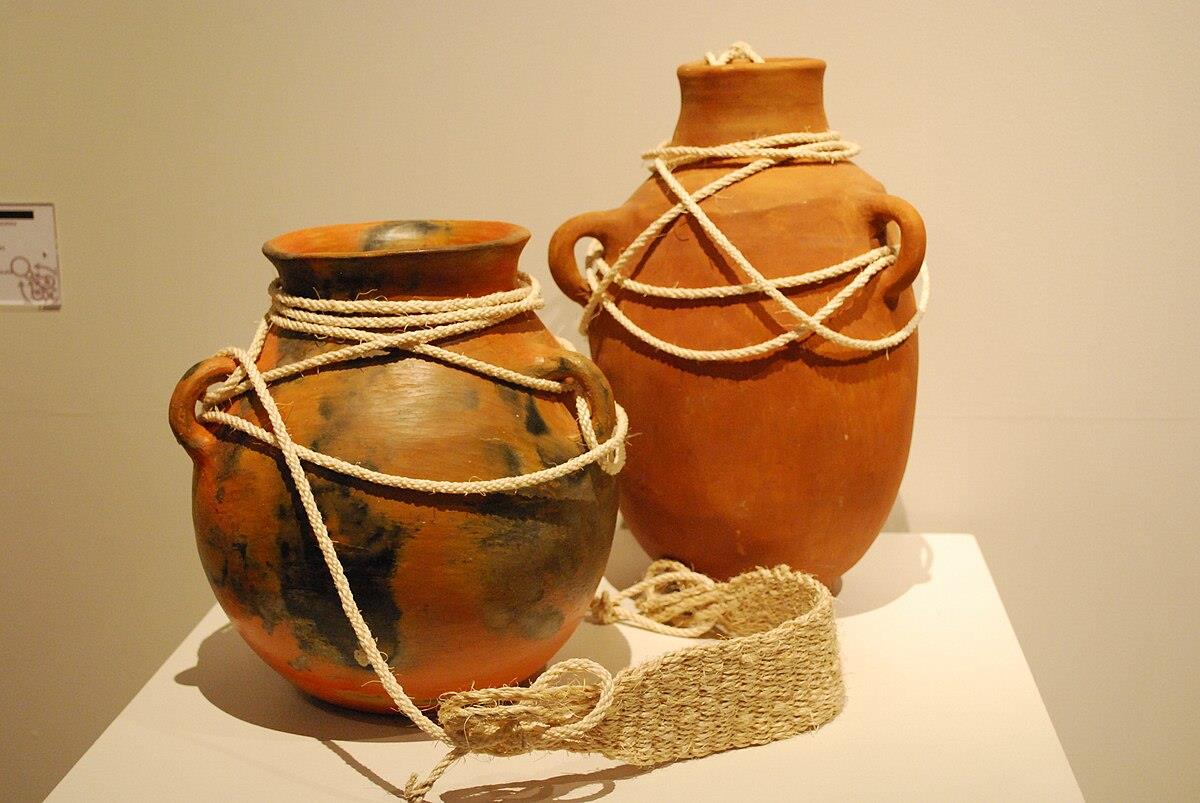
Cántaros are tall, elegant jugs made from red or white clay. Their wide bodies and narrow necks make them ideal for carrying and storing water. In the past, they were a daily necessity—used to fetch water from wells or fountains. Thanks to the clay’s natural cooling effect, the water stayed refreshingly cool even on hot summer days.
Botijo – Spain’s Natural Cooling Jug
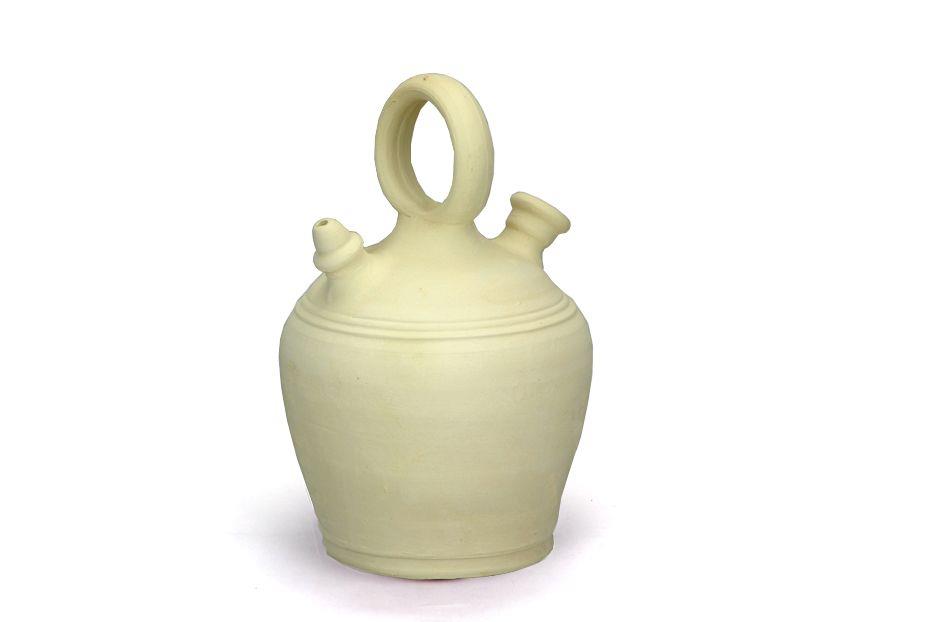
Botijos are clever little pots with two spouts-one to fill and one to drink from. Made from unglazed clay, they “sweat” just enough to keep the water inside cool through evaporation. They’re often used in Spain’s hot, dry regions and are loved for their quirky, rustic charm.
Orza – The Old-School Storage Jar
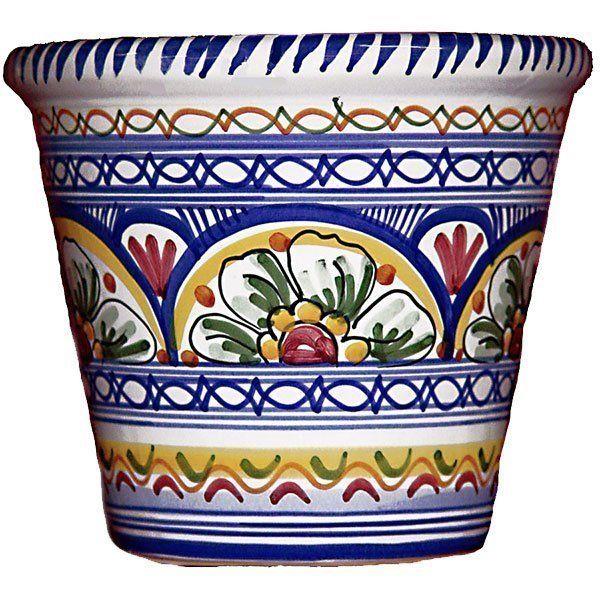
Orzas are strong, deep jars traditionally used to store preserved foods like pork, sausages, or olives. People would fill them with olive oil or lard to keep the contents fresh. Their thick clay walls protected food from light and heat before fridges were around.
Cazuela – Spain’s Favorite Cooking Dish
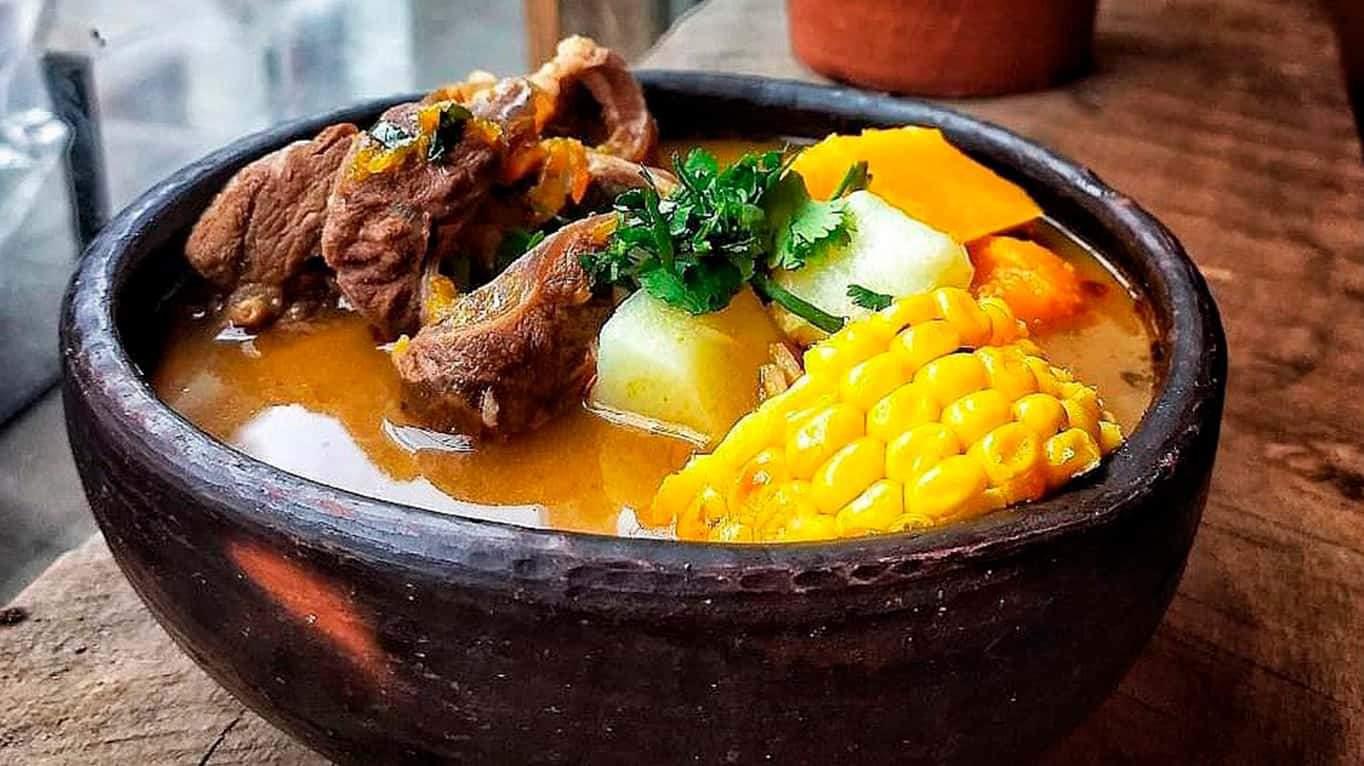
The cazuela is a flat, round clay dish with short sides and small handles. It’s designed for cooking over flame or in the oven and is used for classic Spanish dishes like garlic shrimp, stews, and baked rice. It retains heat beautifully and looks great on the table, too.
Puchero – The Stew Pot
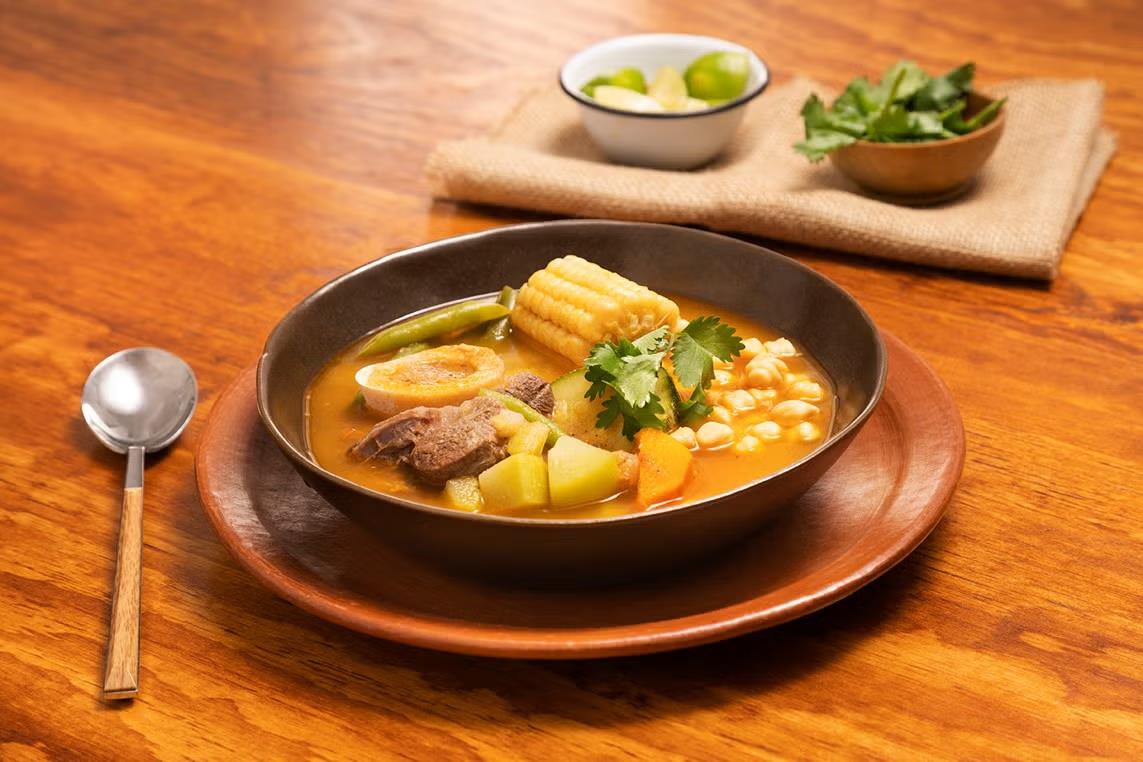
This deep, rounded pot is built for slow-cooking rich, comforting meals. It’s a go-to for making cocido or other one-pot stews that simmer for hours. Pucheros can hold a lot, making them ideal for big families or Sunday lunches.
Tina – The Multipurpose Clay Basin
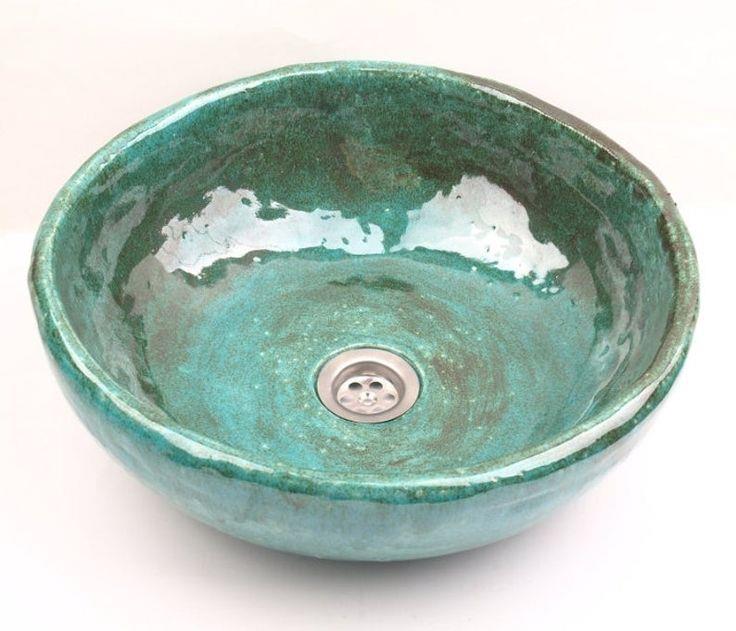
The tina is a large, open clay tub used in the past for things like washing clothes, making cheese, or fermenting wine. Today, you’ll often see them repurposed as rustic planters or used as beautiful accent pieces in gardens and patios.
Regional Influence In Spanish Pottery
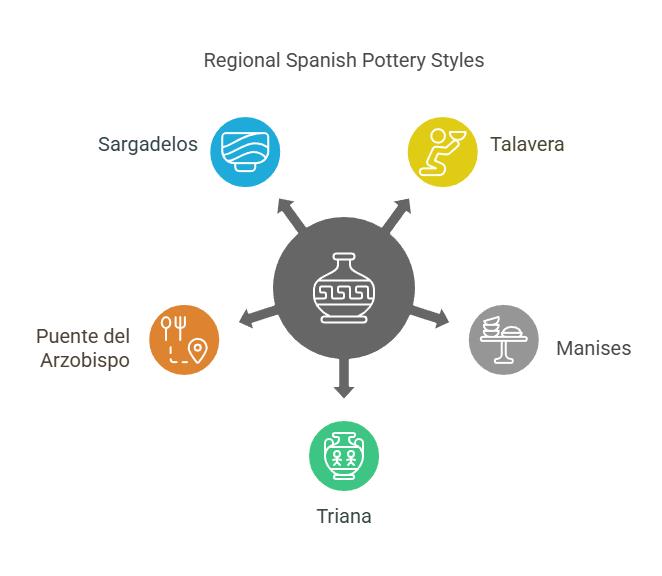
One of the best things about Spanish pottery is how each region adds its own personal touch. Depending on where it's made, the colors, patterns, and styles can look completely different. That means when you buy a piece of Spanish pottery, you're not just getting a pot. You’re getting a little piece of that region’s culture. Let’s take a quick tour so you know what to look for!
Talavera de la Reina (Castilla-La Mancha)
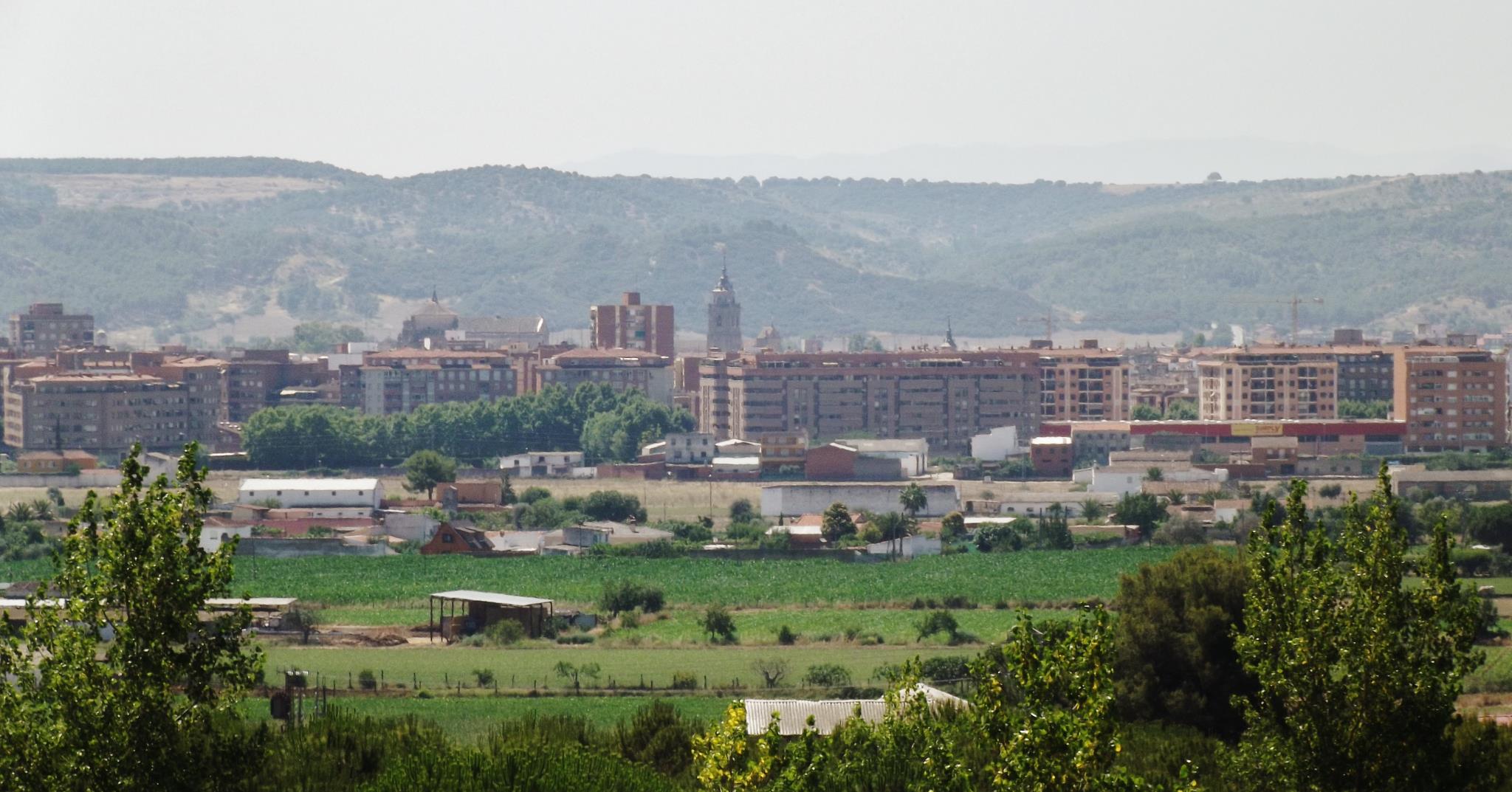
If you love bright colors and detailed hand-painted designs, you’ll fall for Talavera pottery. It often features flowers, animals, or religious art in blue, yellow, and green tones. It’s fun, vibrant, and full of history.
Best known for: Decorative plates, vases, tiles
Manises (Valencia)
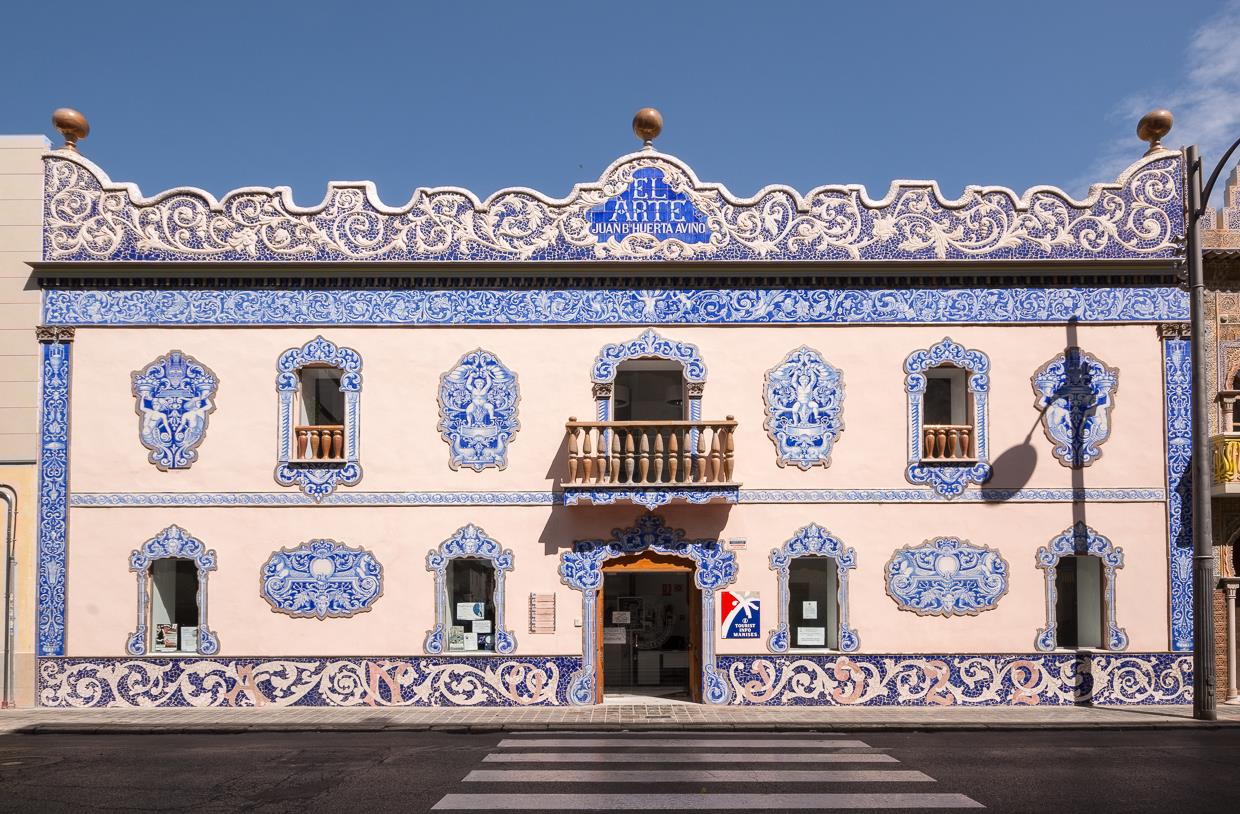
This region is known for shiny, metallic-looking pottery called lusterware. It has a smooth finish and beautiful designs that shine in the light. These pieces look elegant and timeless.
Best known for: Luster-glazed bowls, dishes, and wall art
Triana (Seville)

Triana pottery is full of life, just like the city it comes from! The designs are often inspired by daily life, traditions, and folklore. You’ll see a lot of bright blue, green, and white in these colorful pieces.
Best known for: Colorful tiles, pitchers, and bowls
Puente del Arzobispo (Toledo)
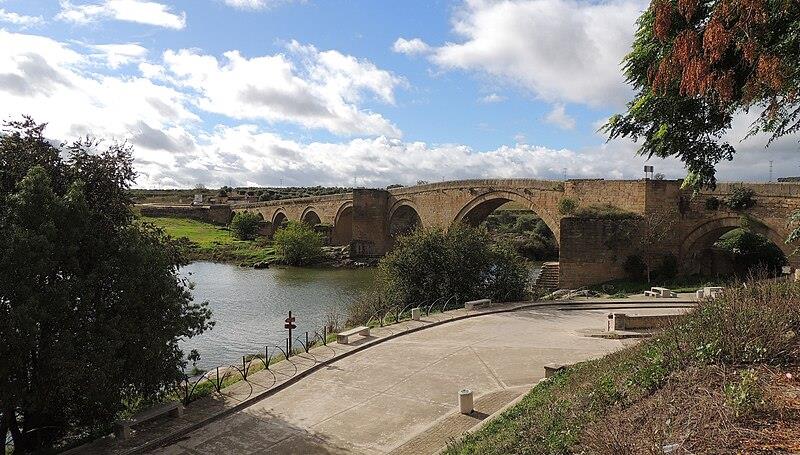
Looking for something simple and charming? Pottery from this town is usually decorated with hand-drawn flowers or animals in earthy tones. It feels warm, homey, and very traditional.
Best known for: Rustic plates, serving bowls, kitchenware
Sargadelos (Galicia)

If you like something more modern and artistic, check out Sargadelos pottery. It’s usually white and blue with clean, abstract designs. It still has roots in Spanish tradition but with a cool, updated feel.
Best known for: Porcelain tableware, modern ceramic décor
Uses of Spanish Clay Pots in Modern Homes
Spanish clay pots aren’t just decorative; they’re practical, too! You can use them for slow-cooked meals like stews and baked dishes, especially with traditional pots like cazuelas and pucheros. They hold heat well and add a cozy, rustic feel to your table.
Many people also use Spanish pots as home décor. Botijos and cántaros look beautiful on shelves and tables or as vases. They make great planters, too! The natural clay helps plants breathe and adds charm to any room. These handmade pieces are also perfect as thoughtful gifts or for stylish storage around the house. With so many uses, Spanish pottery brings beauty, function, and tradition into your modern home.
How To Identify Authentic Pots Easily
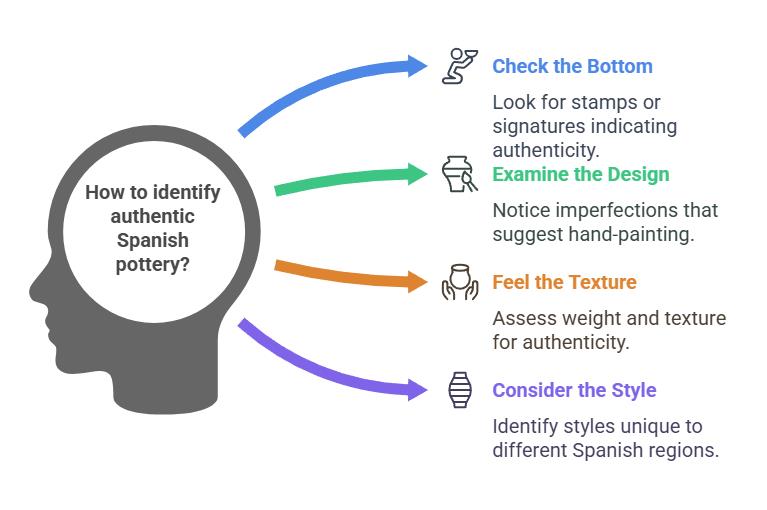
Flip it over and check the bottom
Authentic Spanish pottery often has a stamp, a signature, or even the name of the workshop. If you see something handwritten or stamped, that’s a good sign!
Look closely at the design.
Real Spanish pottery is hand-painted, so don’t expect perfect lines. If you notice small brush strokes or little imperfections, that actually means it’s likely handmade. Perfect = machine-made. Unique = handmade.
Feel the texture
Pick it up. How does it feel? Authentic pieces usually have a bit of weight and a natural, earthy feel. If it’s too smooth or super light, it might be mass-produced.
Think about the style.
Different parts of Spain have their own pottery style. If it’s colorful and floral, it could be from Talavera. If it’s shiny and metallic-looking, that’s probably Manises. Knowing the style helps you figure out where it’s from and if it’s legit.
Buy from people who know their stuff
If you're shopping online or in person, try to buy from trusted sellers or artisan markets. If the seller can tell you where the piece was made or who made it, you’re in good hands.
How to Preserve Spanish Pots
To keep your Spanish clay pots looking beautiful and working well for years, a little care goes a long way!
- First, always hand-wash them with mild soap and warm water. Avoid dishwashers, as the heat and pressure can cause cracks. Let the pot dry completely before storing.
- If you’re using it for cooking, season it first by soaking it in water for a few hours, then gently heating it. Avoid sudden temperature changes, like putting a hot pot on a cold surface, as this can lead to cracking.
- Store your pots in a dry place, and don’t stack them too tightly.
Final Words
Spanish pottery is more than just clay and color. It is a beautiful blend of culture, tradition, and craftsmanship. Every piece, from cooking pots to decorative vases, carries a bit of Spain’s rich history. Whether you're drawn to bold patterns or simple rustic charm, there's something truly special about holding a handmade item created with care.
Now that you know what makes Spanish pottery so unique, why not bring a piece into your own home? Whether for everyday use or as a meaningful gift, it’s something you’ll treasure. And when you're ready, Global Reach Ceramic is here to help you find the perfect piece straight from the heart of tradition.
Frequently Asked Questions (FAQs)
Question: What are the different types of Spanish pottery?
Answer: Spain offers a wide variety of traditional pottery, each with its own style and purpose. Common types include:
- Cántaro – a classic water jug
- Botijo – A natural water cooler made from porous clay
- Orza – a deep jar for preserving food
- Cazuela – a shallow clay dish used for cooking
- Puchero – a deep pot for stews
- Tina – a large basin for washing or fermenting
Each piece reflects the local culture and history of the region where it’s made.
Question: What is the famous pottery from Spain?
Answer: One of the most famous types of Spanish pottery is Talavera de la Reina, known for its hand-painted, colorful designs featuring flowers, animals, and traditional patterns. It comes from the Castilla-La Mancha region and is loved for its detailed artistry and cultural significance. Manises (from Valencia) is also well-known for its shiny, metallic-looking lusterware, and Triana pottery from Seville is famous for its vibrant folk-style tiles and ceramics.
Question: Can you cook with Spanish clay pots?
Answer: Yes, you can! Traditional Spanish clay pots like cazuelas and pucheros are made for cooking. They’re perfect for slow-cooked meals, stews, and oven-baked dishes. These pots hold heat evenly and add a rich, earthy flavor to your food. Just remember to season them before your first use and avoid sudden temperature changes to prevent cracking.
Question: What is Spanish porcelain called?
Answer: The most recognized name in Spanish porcelain is Sargadelos, from the Galicia region. Sargadelos porcelain is known for its fine quality, unique blue-and-white designs, and modern artistic style. It combines tradition with contemporary design, making it popular both in Spain and internationally.
Question: How do you care for Spanish pottery?
Answer: To keep your Spanish pottery in great shape, always hand-wash it with mild soap and let it air dry completely. Avoid dishwashers or harsh scrubbing. For cooking pots, soak and season them before use. Also, try not to expose them to extreme temperature changes (like taking them straight from the fridge to a hot oven).
RECENT POSTS
- The Benefits of Wholesale High-Quality Ceramic Products for Retailers
2025-12-17
- Can You Make an Ashtray with Air Dry Clay? Pros, Cons, and Safer Alternatives
2025-12-17
- The Impact of Ceramic Materials in Energy-Efficient Buildings: Benefits and Applications
2025-12-04
- Top 7 Ceramic Cookware Health Benefits: Why It’s a Safer Choice for Your Kitchen
2025-12-04
- How to Clean Ceramic Planters and Improve Their Lifespan?
2025-11-17
- 15 Best Ceramic Holiday Gift Ideas for 2025: Thoughtful, Elegant & Heartfelt
2025-11-17
- Stoneware vs Porcelain vs Earthenware: Quick Decision Guide
2025-10-09
- Are Ceramic Glazes Food Safe? The Truth Behind the Shine
2025-10-09










